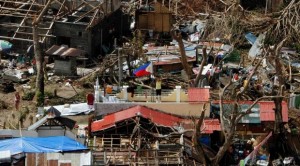Bamboo houses for calamity-hit areas

The Philippine Bamboo Foundation (PBF) has been in collaboration with Habitat for Humanity and the Department of Social Welfare and Development for the development of bamboo-cement technology to be used to make sturdy, earthquake- and storm-proof houses for earthquake-stricken Bohol and Supertyphoon “Yolanda”-hit areas.
This was revealed by Edgardo Manda, PBF president. He added that the prototyping is now being done by Habitat for Humanity.
Manda said PBF and Habitat signed a memorandum of understanding on Jan. 13 “to explore a partnership in developing hybrid bamboo houses primarily for earthquake victims in Bohol. Once fully developed, it could be replicated in Yolanda-hit areas.”
Manda said the basic model is seen to be about 20 square meters with two bedrooms and an attached toilet and bath, made with galvanized steel frame and GI sheet roof for quick assembly. Budget estimate for each house starts at P70,000.
He disclosed that Hilti Foundation, a charitable organization of the Martin Hilti Family Trust, has also been developing a hybrid bamboo house.
Manda said, “the basic problem (for this project) is bamboo supply, which will run out when this hybrid bamboo house becomes popular.”
Short supply
“That’s the reason our ragtag group, the PBF, has been persistently pushing for massive bamboo plantation projects, either by government or private investors … because there’s no more wood to cut, (considering that there has also been) a total log ban,” he said.
He explained: “Bamboo utilization is the attraction, but the supply side is being ignored. How to generate interest in accelerating bamboo resources development with government intervention is the real challenge.”
Manda told Inquirer Property that in the Philippines, the use of bamboo in the construction of houses has not been as extensive as it should be because the material—a form of tall grass—is not recognized as a conventional construction material under the building code. He foresees, however, the rise of bamboo in the property industry as timber replacement due to the scarcity of wood.
Bamboo (kawayan in the vernacular) can be found everywhere. Manda said it is “as abundant as it is hardy, a symbol of Filipino resilience. The bamboo sways with the strongest of winds, and bends unbreakable in extreme weather.”
The bamboo has long been used by Filipinos for various construction needs. It has also been present in homegrown innovations, such as that of architect Edilberto Morcilla’s floating shelters (as classrooms, homes, carports), of which he points out in the technical description that “in areas where strong current and debris can occur, the most practical and cheapest solution is to plant bamboo all around the house.”
Sustainable demand
Manda said: “The advantage of using bamboo in the real estate and construction industries lies in the creation of sustainable demand for investors or government to pour resources in the development of commercial bamboo plantation in the Philippines, which could lead to the development of ‘downstream’ products. This would also lead to creating more jobs in the rural areas.”
The Forest Products Research and Development Institute (FPRDI), in a statement last year, said “engineered” bamboo may soon become a more popular material for making housing components and furniture in the Philippines due to the FPRDI’s efforts at improving its quality.
The FPRDI coined its improved bamboo materials as “e-bamboo” and said its “engineered bamboo includes a wide range of composite products manufactured by binding together bamboo strips, slats, strands, particles, fibers or veneers with a suitable glue.”
